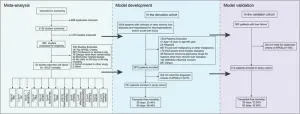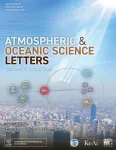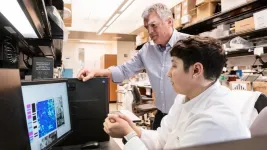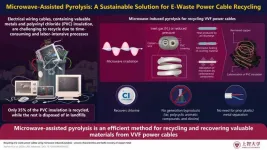(Press-News.org) About The Study: This cohort study among individuals participating in a weight loss program found that nearly half of those consuming alcohol at baseline decreased their alcohol use after anti-obesity medication initiation. There may be properties of anti-obesity medications that lead to reduced use. For example, naltrexone decreases cravings for alcohol and glucagon-like peptide-1 receptor agonists (GLP-1 RAs) may attenuate the rewarding effects of alcohol, similar to food.
Corresponding Author: To contact the corresponding author, Lisa R. Miller-Matero, PhD, email lmatero1@hfhs.org.
To access the embargoed study: Visit our For The Media website at this link https://media.jamanetwork.com/
(doi:10.1001/jamanetworkopen.2024.47644)
Editor’s Note: Please see the article for additional information, including other authors, author contributions and affiliations, conflict of interest and financial disclosures, and funding and support.
# # #
Embed this link to provide your readers free access to the full-text article This link will be live at the embargo time http://jamanetwork.com/journals/jamanetworkopen/fullarticle/10.1001/jamanetworkopen.2024.47644?utm_source=For_The_Media&utm_medium=referral&utm_campaign=ftm_links&utm_term=112624
About JAMA Network Open: JAMA Network Open is an online-only open access general medical journal from the JAMA Network. On weekdays, the journal publishes peer-reviewed clinical research and commentary in more than 40 medical and health subject areas. Every article is free online from the day of publication.
END
Alcohol use and antiobesity medication treatment
JAMA Network Open
2024-11-26
ELSE PRESS RELEASES FROM THIS DATE:
Study reveals cause of common cancer immunotherapy side effect
2024-11-26
A multinational collaboration co-led by the Garvan Institute of Medical Research has uncovered a potential explanation for why some cancer patients receiving a type of immunotherapy called checkpoint inhibitors experience increased susceptibility to common infections.
The findings, published in the journal Immunity, provide new insights into immune responses and reveal a potential approach to preventing the common cancer therapy side effect.
“Immune checkpoint inhibitor therapies have revolutionised cancer treatment ...
New era in amphibian biology
2024-11-26
Amphibians hold a significant place in evolution, representing the transition from aquatic to terrestrial lifestyles. They are crucial for understanding the brain and spinal cord of tetrapods—animals with four limbs, including humans. A group of scientists led by a team at the Institute of Science and Technology Austria (ISTA) now shows how harmless viruses can be used to illuminate the development of the frog nervous system. The results have now been published in Developmental Cell.
Virus. When you hear the word, you probably shudder. But not all viruses are bad or cause disease. Some are even used for therapeutic ...
Harbor service, VAST Data provide boost for NCSA systems
2024-11-26
The National Center for Supercomputing Applications and VAST Data are giving supercomputing system Delta and the newly launched DeltaAI a boost in their storage and application performance.
NCSA launched Harbor, a service that provides very fast storage for global home and software directories across all NCSA open-science resources. Its deployment has led to a 400% increase in application launch performance for the Delta system, among many other gains.
Over the last two years, we’ve seen a significant increase in ...
New prognostic model enhances survival prediction in liver failure
2024-11-26
Researchers have unveiled a groundbreaking advancement in liver failure care: the CATCH-LIFE-MELD score (Chinese Acute-on-Chronic Liver Failure Consortium (CATCH-LIFE)-MELD score). This innovative tool, developed by an international team led by Xia Yu and colleagues, enhances the accuracy of predicting short-term survival outcomes for patients suffering from acute-on-chronic liver failure (ACLF). The study, published in eGastroenterology, promises to revolutionize patient management and treatment planning for this life-threatening condition.
“ACLF presents unique challenges due to its rapid progression and high mortality rates,” said Dr. Yu Shi, senior researcher at Zhejiang University ...
China focuses on improving air quality via the coordinated control of fine particles and ozone
2024-11-26
A recent special issue of the journal Atmospheric and Oceanic Science Letters has brought together some of China's top scientists to provide a picture of the latest progress in understanding and controlling air pollution.
Fine particulate matter, referred to as PM2.5, and ground-level ozone (O3) are the main pollutants degrading the air quality of China’s cities and wider urban regions. Both have serious human health effects, such as heart disease, asthma, and lung damage.
The World Health Organization (WHO) provides clear guidelines regarding acceptable concentrations ...
Machine learning reveals behaviors linked with early Alzheimer’s, points to new treatments
2024-11-26
SAN FRANCISCO—November 26, 2024—Subtle signs of Alzheimer’s disease can emerge decades before a diagnosis—often in the form of irregular behaviors that reflect very early stages of brain dysfunction.
But until now, identifying and measuring these slight behavioral changes in a scientific way hasn’t been feasible, not even when studying Alzheimer’s in mice.
In a study published in Cell Reports, a team of scientists at Gladstone Institutes used a new video-based machine learning tool to pinpoint ...
Novel gene therapy trial for sickle cell disease launches
2024-11-26
UCSF Benioff Children's Hospital Oakland is enrolling patients in an innovative clinical trial that seeks to cure sickle cell disease. The trial is the first in the U.S. to apply non-viral CRISPR-Cas9 gene-editing technology in humans to directly correct the genetic mutation that causes the disease.
The research involves taking the patient’s blood stem cells to correct the mutation and returning those edited cells to the patient through a bone marrow transplant. It’s hoped the corrected blood stem cells will then multiply and create a new blood system, one free of sickle cell.
“This ...
Engineering hypoallergenic cats
2024-11-26
Gene editing could create hypoallergenic cats, according to a sequence analysis of the protein that triggers allergies to cats. Some 15% of people are allergic to cats, and symptoms can be severe. Martin D. Chapman and colleagues investigated CH1 and CH2, genes that code for the allergen, Fel d 1. Cats produce Fel d 1 in their sebaceous, salivary, perianal, and lachrymal glands. The function of Fel d 1 is unknown but comparisons of Fel d 1 sequences and homologs from 276 domestic or exotic cats—including cougars, cheetahs, lions, tigers, and jaguars, among others—suggests that CH1 and CH2 have been under active selection, and ...
Microwave-induced pyrolysis: A promising solution for recycling electric cables
2024-11-26
The demand for electronics has led to a significant increase in e-waste. In 2022, approximately 62 million tons of e-waste were generated, marking an 82% increase from 2010. Projections indicate that this figure could rise to 82 million tons by 2030. E-waste contains valuable materials such as metals, semiconductors, and rare elements that can be reused. However, in 2022, only 22.3% of e-waste was properly collected and recycled, while the remaining materials, estimated to be worth almost $62 billion, were discarded in landfills. Although efforts to improve e-waste recycling continue, the process remains labor-intensive, and a significant portion of e-waste ...
Cooling with light: Exploring optical cooling in semiconductor quantum dots
2024-11-26
Cooling systems are an integral part of many modern technologies, as heat tends to wear down materials and decrease performance in several ways. In many cases, however, cooling can be an inconvenient and energy-intensive process. Accordingly, scientists have been seeking innovative and efficient methods to cool substances down.
Solid-state optical cooling is a prominent example that leverages a very unique phenomenon called anti-Stokes (AS) emission. Usually, when materials absorb photons from incoming light, their electrons transition into an “excited” state. Under ideal conditions, as electrons return to their original ...
LAST 30 PRESS RELEASES:
Sleeping in on weekends may help boost teens’ mental health
Study: Teens use cellphones for an hour a day at school
After more than two years of war, Palestinian children are hungry, denied education and “like the living dead”
The untold story of life with Prader-Willi syndrome - according to the siblings who live it
How the parasite that ‘gave up sex’ found more hosts – and why its victory won’t last
When is it time to jump? The boiling frog problem of AI use in physics education
Twitter data reveals partisan divide in understanding why pollen season's getting worse
AI is quick but risky for updating old software
Revolutionizing biosecurity: new multi-omics framework to transform invasive species management
From ancient herb to modern medicine: new review unveils the multi-targeted healing potential of Borago officinalis
Building a global scientific community: Biological Diversity Journal announces dual recruitment of Editorial Board and Youth Editorial Board members
Microbes that break down antibiotics help protect ecosystems under drug pollution
Smart biochar that remembers pollutants offers a new way to clean water and recycle biomass
Rice genes matter more than domestication in shaping plant microbiomes
Ticking time bomb: Some farmers report as many as 70 tick encounters over a 6-month period
Turning garden and crop waste into plastics
Scientists discover ‘platypus galaxies’ in the early universe
Seeing thyroid cancer in a new light: when AI meets label-free imaging in the operating room
Neutrophil-to-lymphocyte ratio may aid risk stratification in depressive disorder
2026 Seismological Society of America Annual Meeting
AI-powered ECG analysis offers promising path for early detection of chronic obstructive pulmonary disease, says Mount Sinai researchers
GIMM uncovers flaws in lab-grown heart cells and paves the way for improved treatments
Cracking the evolutionary code of sleep
Medications could help the aging brain cope with surgery, memory impairment
Back pain linked to worse sleep years later in men over 65, according to study
CDC urges ‘shared decision-making’ on some childhood vaccines; many unclear about what that means
New research finds that an ‘equal treatment’ approach to economic opportunity advertising can backfire
Researchers create shape-shifting, self-navigating microparticles
Science army mobilizes to map US soil microbiome
Researchers develop new tools to turn grain crops into biosensors
[Press-News.org] Alcohol use and antiobesity medication treatmentJAMA Network Open





